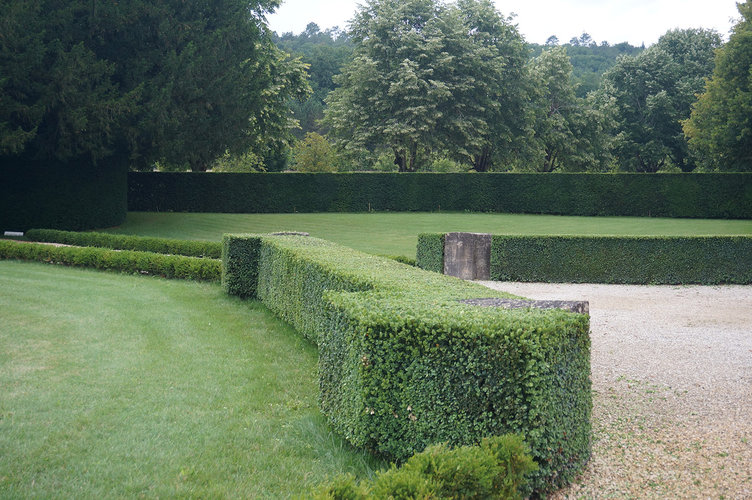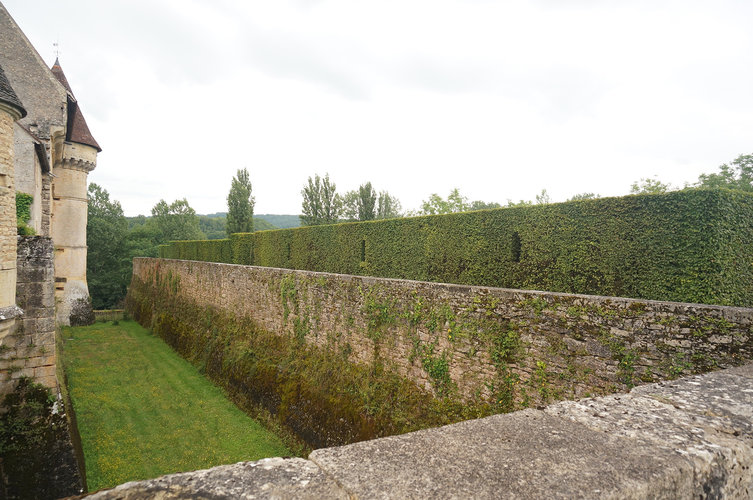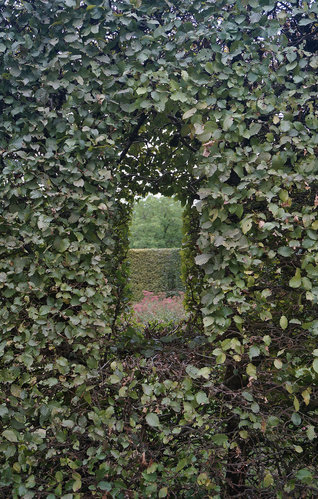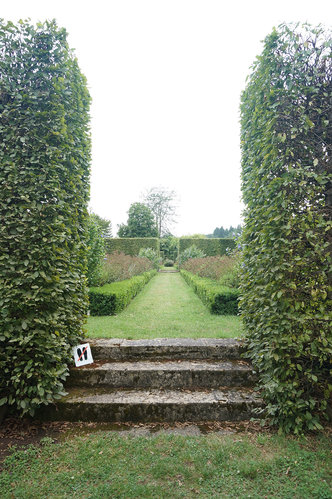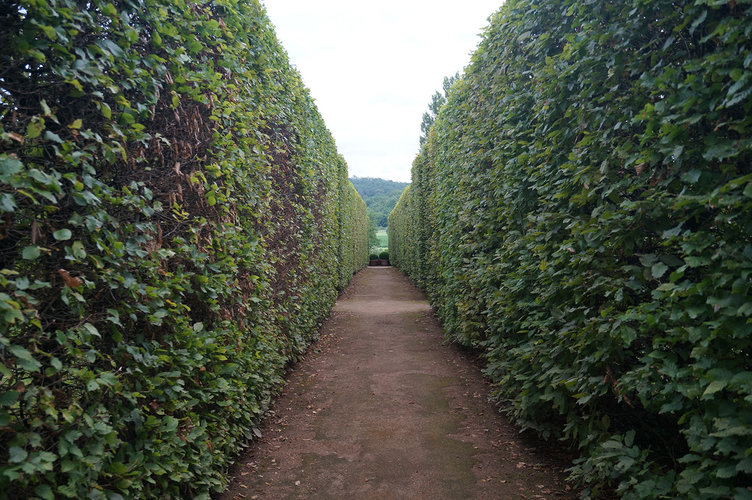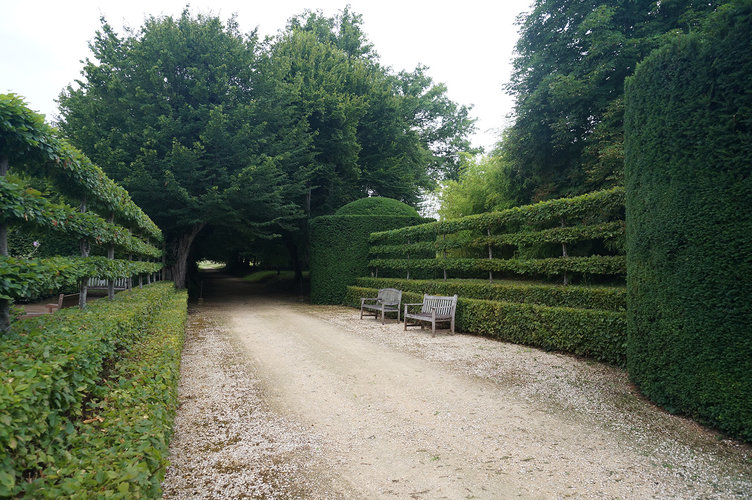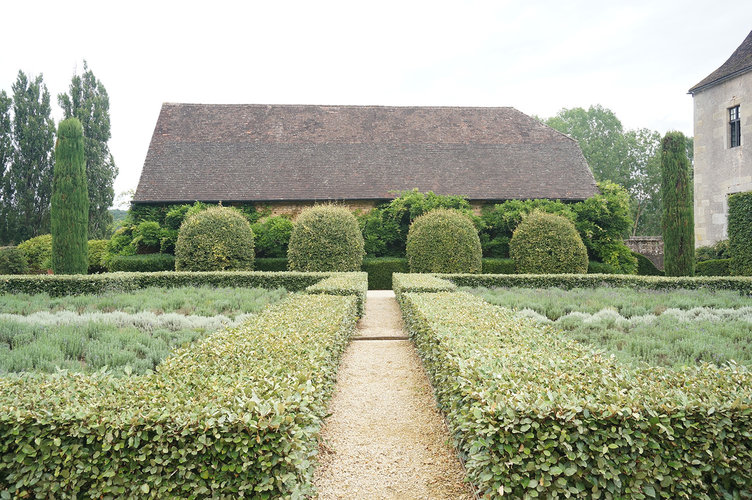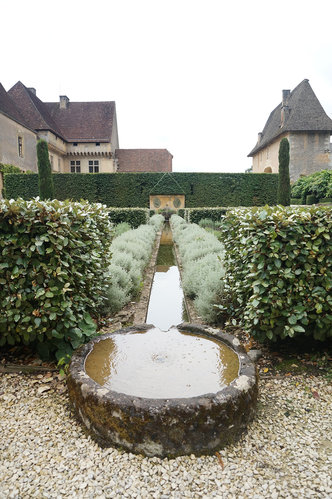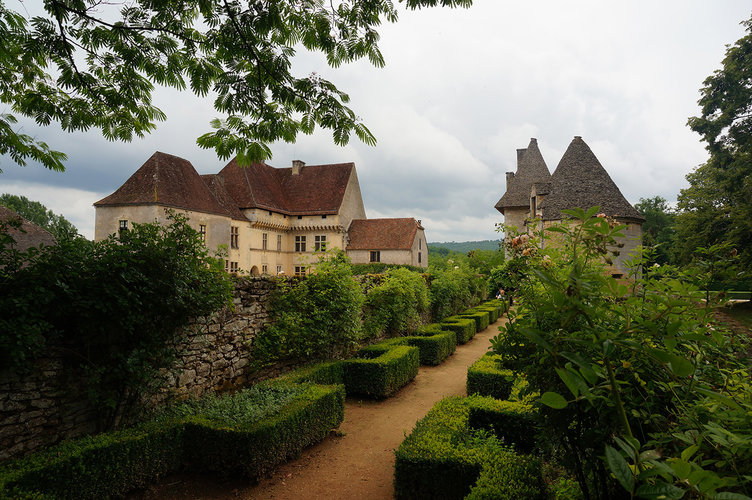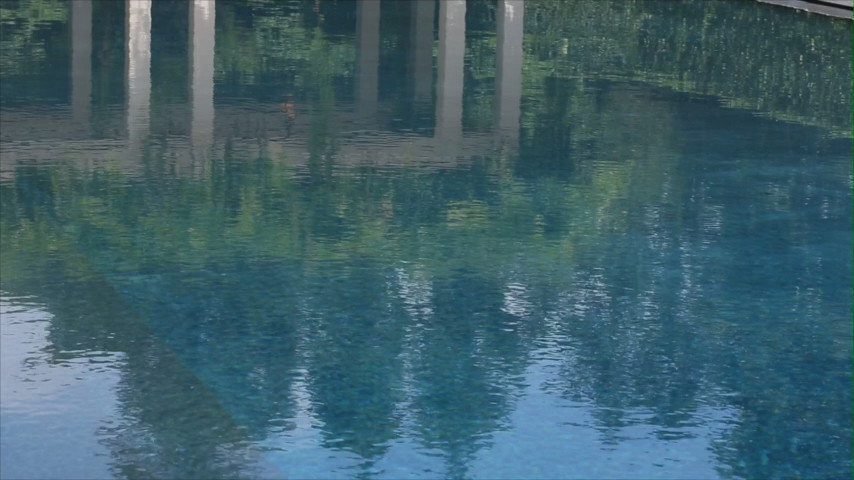
Same theme, different manifestations: When all the battles are fought and defenses down for good, fill the ramparts with gardens. But even with matching intent, the landscape expressions at Chateau de Hautefort and Chateau de Losse are distinctly unique in character. Hautefort like an aging lady filling every line with the fanciest treatment and gaudily painting over the ones she can’t erase. And Losse taking minimal but confident action to make the most of her fortunate genes, gracefully and enviably carrying herself through the passage of time.
Admittedly, Chateau de Hautefort is the more inherently and historically aristocratic of the two—home to generations of Lords, Loire-style architecture and a prestigious setting high above its town. The gardens in their current state were originally designed in 1853 by the famous landscape architect of the day, Le Comte de Chaulot and have since been meticulously maintained by the successive owners of the Chateau. But as evidenced by the over-wrought and under-thought design (and speaking from personal experience,) landscape architects are not always right. Unchecked ego is the predominant sense—grandeur for the sake of grandeur. The boxwood parterres are as elaborate as they could possibly be, with endless combinations of swirls, checkerboards, criss-crosses, knots and quatrefoils. They are imposed on top of a sloping grade and forced into symmetrical submission within an assymetrical remain of wall. The topiaries introduced by the last owner, Baroness de Bastard, are inspired by the shapes of the architectural domes and are possibly the most well-considered—if overly literal—detail.
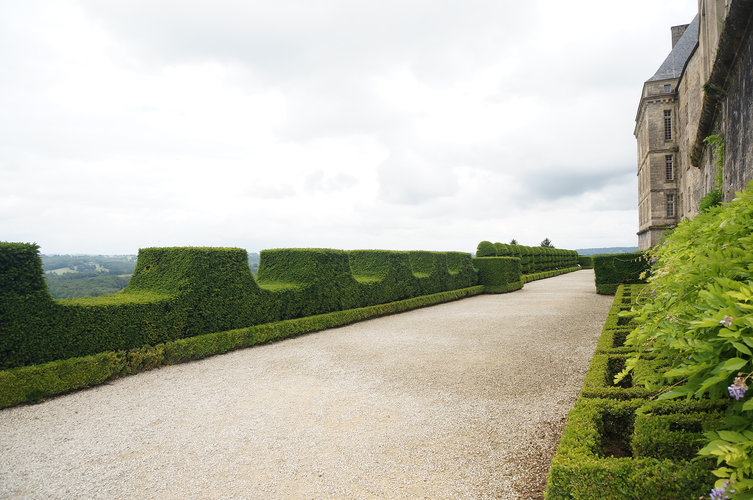
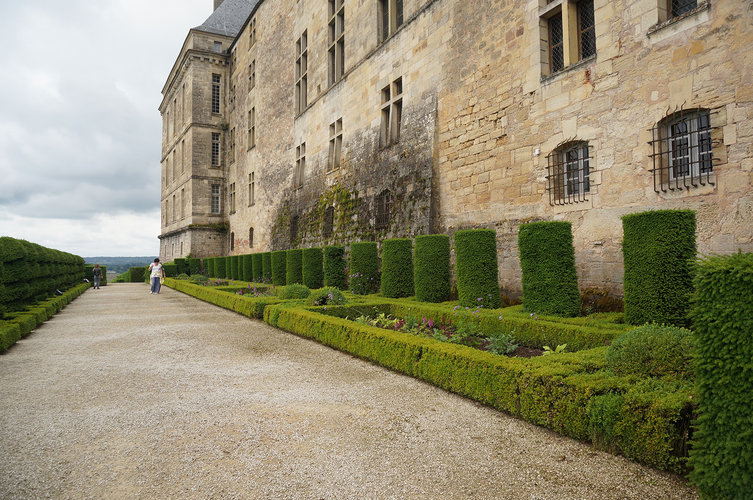
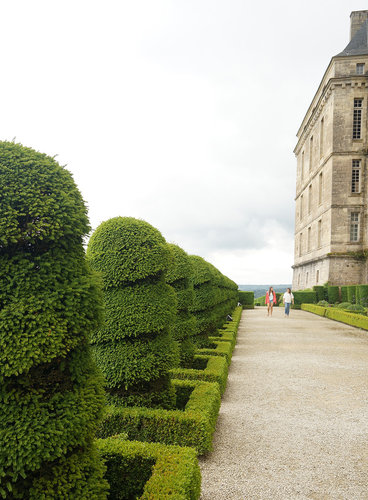
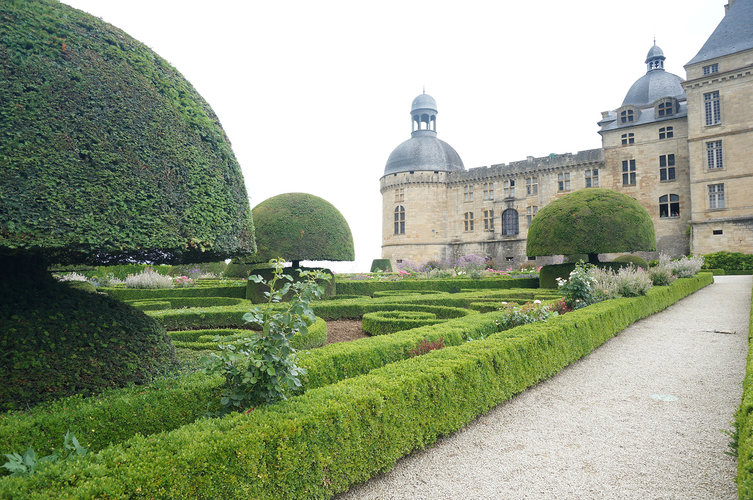
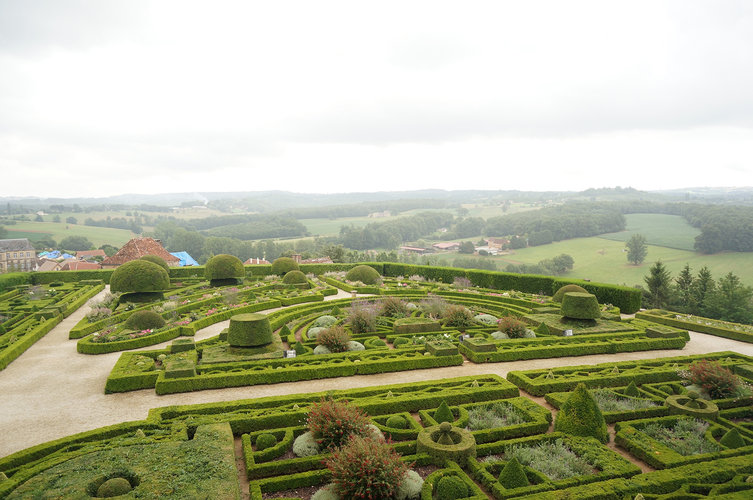
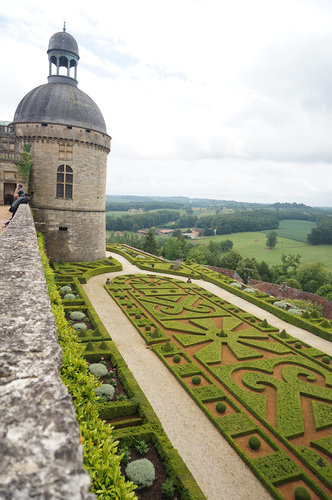
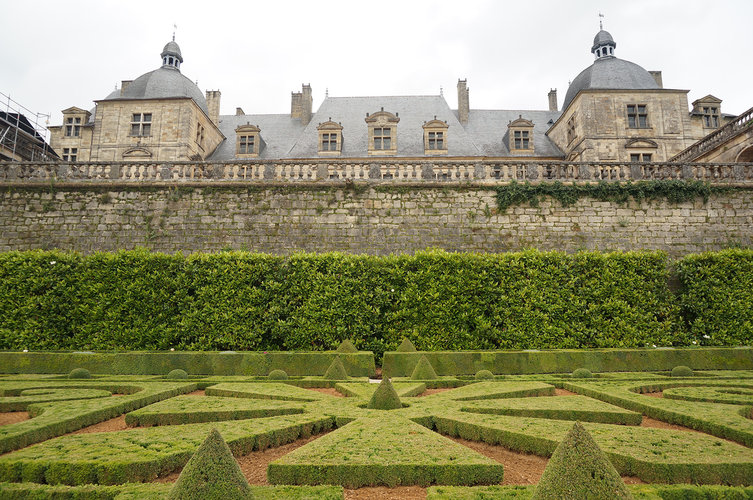
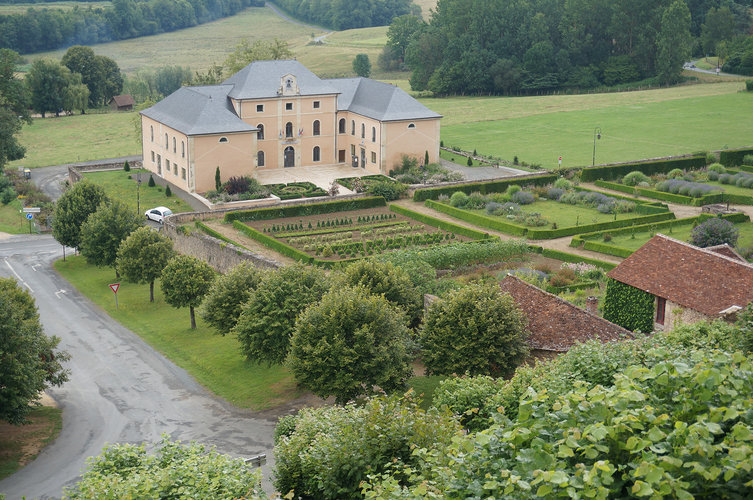
Chateau de Losse is as understated as Hautefort is bawdy. Better bone structure helps (a more rectilinear layout of rampart walls and a less imposing topographical position,) but a sense of style overwhelms—the right accessories carefully placed to accentuate the best attributes and conceal the less attractive ones. The garden rooms are arranged to intrigue and encourage exploration, with the planted walls as lovely as what lies within them. Flowers are few and primarily for fragrance. Simple shapes complement the (slightly) more modest architecture. And the manicured gardens which frame and provide foreground for their Vezere River setting heighten the contrast between the wild and the tamed and enhance the beauty of both. Losse is a lesson in restraint and appropriateness that would not have been adequately appreciated without the experience of Hautefort.

